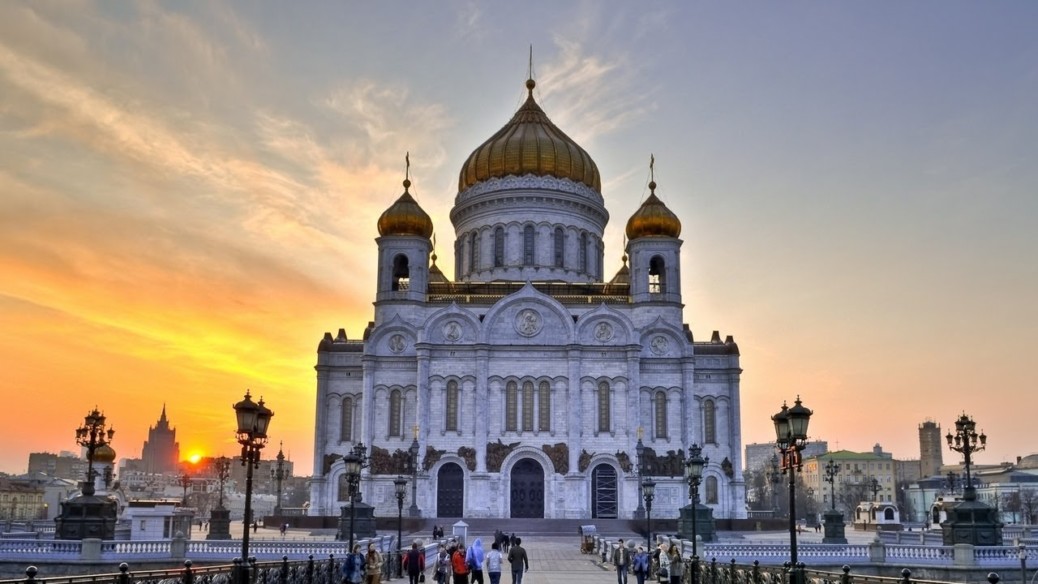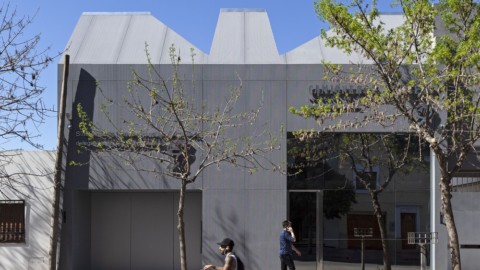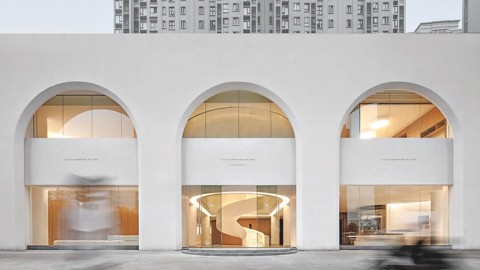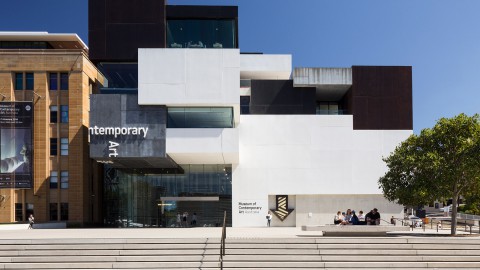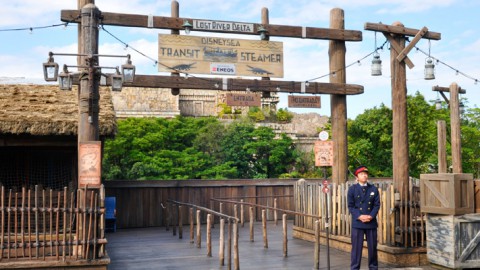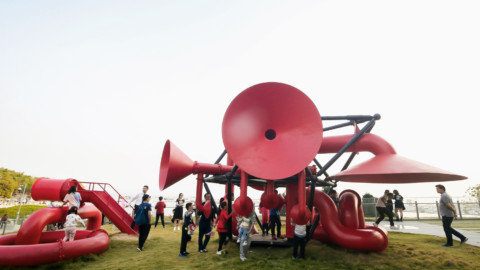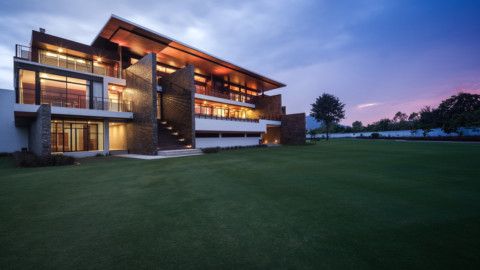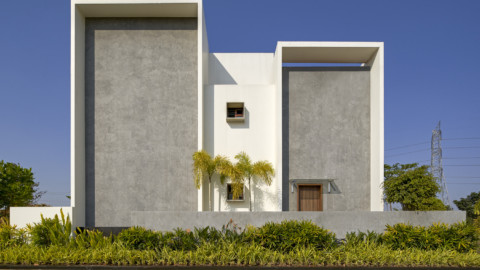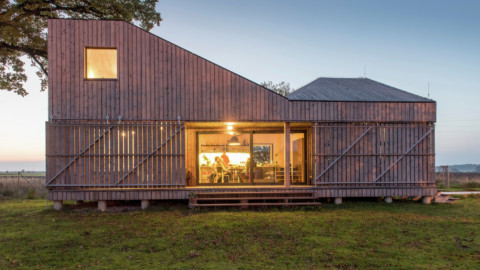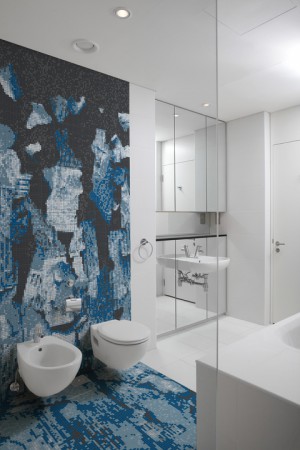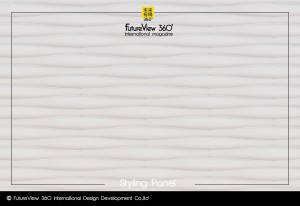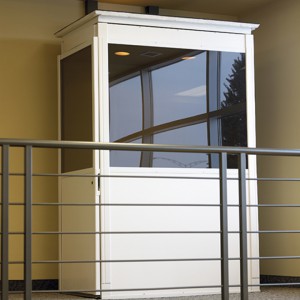Cathedral of Christ the Saviour 基督救世主大教堂
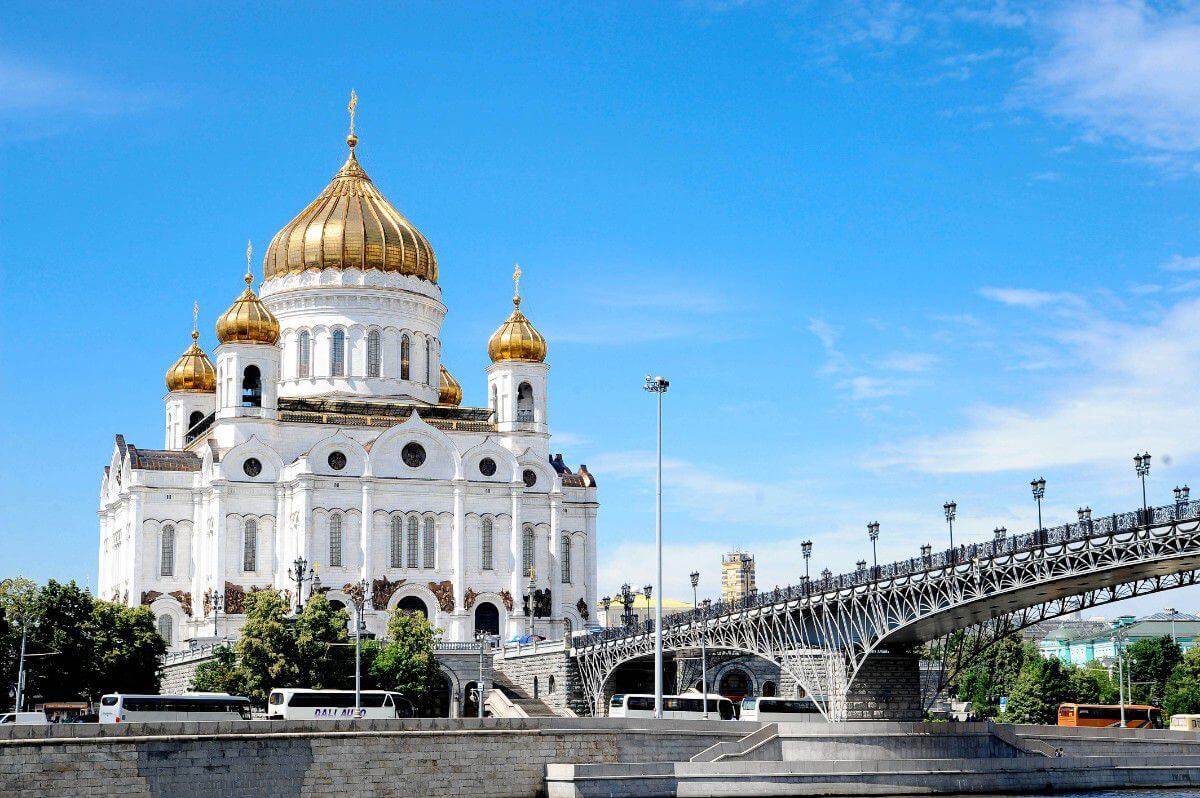
The current church is the second to stand on this site. The original church, built during the 19th century, took more than 40 years to build, and was the scene of the 1882 world premiere of the 1812 Overture composed by Tchaikovsky. It was destroyed in 1931 on the order of Soviet leader Joseph Stalin. The demolition was supposed to make way for a colossal Palace of the Soviets to house the country’s legislature, the Supreme Soviet of the USSR. Construction started in 1937 but was halted in 1941 when Germany invaded the Soviet Union during World War II. Its steel frame was disassembled the following year, and the Palace was never built. Following the dissolution of the Soviet Union, the current church was rebuilt on the site between 1995 and 2000.
In 2018, it was reported that the foundations of the church were sinking and a massive campaign of underpinning and reconstruction was needed.
基督救世主大教堂(俄語:ХрамХристаСпасителя,羅馬語:Khram Khrista Spasitelya)是位於莫斯科的俄羅斯東正教大教堂,位於莫斯科河北岸,距克里姆林宮西南幾百米。它的總高度為103米(338英尺),是世界上第二高的東正教教堂,僅次於羅馬尼亞布加勒斯特的人民救世大教堂。
當前的教堂是第二個站在該地點的教堂。最初的教堂建於19世紀,耗時40多年,是柴可夫斯基在1882年全球首映的1812年序曲的現場。它在1931年應蘇聯領導人約瑟夫·斯大林(Joseph Stalin)的命令銷毀。拆除原本應該是為龐大的蘇維埃宮殿提供了住所,以容納該國的立法機關,即蘇聯最高蘇維埃。工程始於1937年,但在1941年第二次世界大戰期間德國入侵蘇聯時被迫中止。第二年拆解了它的鋼框架,宮殿從未建造。蘇聯解體後,目前的教堂於1995年至2000年在原址上重建。
據報導,2018年教堂的基礎正在下沉,需要開展大規模的基礎和重建運動。
Location:Moscow, Russia
Denomination:Russian Orthodox
History
Consecrated:19 August 2000
Architecture
Style:Russian Revival
Specifications
Capacity:10,000 people
Length:79 m (length-width)
Height:103.4 m (top cross)
91.5 (top dome)
69.5 (dom ceiling)
Nave height:37 m (interior)
Other dimensions:194,900 m3
Floor area:3,980 m2
Dome diameter (outer):29.8 m
地點:俄羅斯莫斯科
單位名稱:俄羅斯東正教
歷史
奉獻:2000年8月19日
建築
風格:俄羅斯復興
技術指標
可容納人數:10,000人
長度:79 m(長-寬)
高度:103.4 m(上十字)
91.5(頂球)
69.5(天花板)
教堂中殿高度:37 m(內部)
其他尺寸:194,900立方米
建築面積:3,980平方米
圓頂直徑(外部):29.8 m
Original cathedral 原始大教堂
Construction 施工
When Napoleon Bonaparte retreated from Moscow, Tsar Alexander I signed a manifesto on 25 December 1812 declaring his intention to build a cathedral in honor of Christ the Savior “to signify Our gratitude to Divine Providence for saving Russia from the doom that overshadowed Her” and as a memorial to the sacrifices of the Russian people. It took some time for work on the projected cathedral to get started. The first finished architectural project, by Aleksandr Lavrentyevich Vitberg, was endorsed by the Tsar in 1817. It was a flamboyant Neoclassical design full of Freemasonic symbolism.
Construction work was begun on the Sparrow Hills, the highest point in Moscow, but the site proved unstable. In the meantime Alexander I was succeeded by his brother Nicholas I. Profoundly Orthodox and patriotic, the new Tsar disliked the Neoclassicism and Freemasonry of the design selected by his predecessor. He commissioned his favorite architect Konstantin Thon to create a new design, taking as his model Hagia Sophia in Constantinople, Turkey. Thon’s Russian Revival design was approved in 1832. A new site closer to the Moscow Kremlin was chosen by the Tsar in 1837. A convent and church on the site had to be relocated, so the cornerstone of the new church was not laid until 1839.
The cathedral took many decades to build; the scaffolding was not taken down until 1860. Its painting was overseen by Evgraf Sorokin, and thereafter some of the best Russian painters (Ivan Kramskoi, Vasily Surikov, V. P. Vereshchagin) continued to embellish the interior for another twenty years. The giant dome of the cathedral was gilded using the new technique of gold electroplating, replacing the older and insecure technique of mercury gilding. Although Tchaikovsky’s 1812 Overture was written with the building’s completion in mind, it had its world premiere in a tent outside the unfinished church in August 1882. The cathedral was consecrated on 26 May 1883, the day before Alexander III was crowned.
The inner sanctum of the church (naos) was ringed by a two-floor gallery, its walls inlaid with rare sorts of marble, granite, and other stones. The ground floor of the gallery was a memorial dedicated to the Russian victory over Napoleon. The walls displayed more than 1,000 square metres (11,000 sq ft) of Carrara bianca marble plaques listing major commanders, regiments, and battles of the Patriotic War of 1812 (with the lists of awards and casualties appended). The second floor of the gallery was occupied by church choirs.
拿破崙·波拿巴從莫斯科撤退後,沙皇亞歷山大一世於1812年12月25日簽署了一份宣言,宣布他打算建造一座大教堂以紀念救世主基督,“以示我們對上帝的感謝,感謝他們拯救了俄羅斯,使她擺脫了籠罩她的厄運”。紀念俄羅斯人民的犧牲。預計的大教堂開始工作需要花費一些時間。由亞歷山大·拉夫倫特耶維奇·維特伯格(Aleksandr Lavrentyevich Vitberg)完成的第一個建築項目於1817年獲得沙皇的認可。
莫斯科最高點的麻雀山(Sparrow Hills)的建設工作已經開始,但現場卻不穩定。在此期間,亞歷山大一世由他的兄弟尼古拉斯一世繼任。他是東正教徒和愛國主義者,新沙皇不喜歡他前任選擇的新古典主義和共濟會。他委託他最喜歡的建築師Konstantin Thon創建了一個新設計,以他在土耳其君士坦丁堡的聖索非亞大教堂(Hagia Sophia)為例。托恩(Thon)的俄羅斯復興設計於1832年獲得批准。沙皇在1837年選擇了一個更靠近莫斯科克里姆林宮的新地點。該地點上的修道院和教堂必須搬遷,因此直到1839年才奠定新教堂的基石。
大教堂花了幾十年才建成。直到1860年,這座腳手架才被拆除。這幅畫由Evgraf Sorokin進行了監督,此後,一些最出色的俄羅斯畫家(伊凡·克拉姆斯科伊,瓦西里·蘇里科夫,V。P. Vereshchagin)繼續為室內裝飾了20年。大教堂的巨大圓頂採用新的鍍金技術鍍金,取代了較舊且不安全的汞鍍金技術。儘管柴可夫斯基的1812年序曲是在考慮到建築完工的情況下寫成的,但它於1882年8月在未完工的教堂外的帳篷中全球首演。大教堂於1883年5月26日(亞歷山大三世加冕前一天)被奉獻。
教堂的內部聖殿(naos)由兩層樓的畫廊環繞,牆壁上鑲嵌著稀有的大理石,花崗岩和其他石頭。美術館的一樓是紀念俄羅斯戰勝拿破崙的紀念碑。牆壁上展示了超過1,000平方米(11,000平方英尺)的卡拉拉比安卡大理石牌匾,上面列出了主要的指揮官,軍團和1812年衛國戰爭的戰鬥(附帶獎勵和傷亡人員名單)。畫廊的二樓被教堂合唱團佔據。
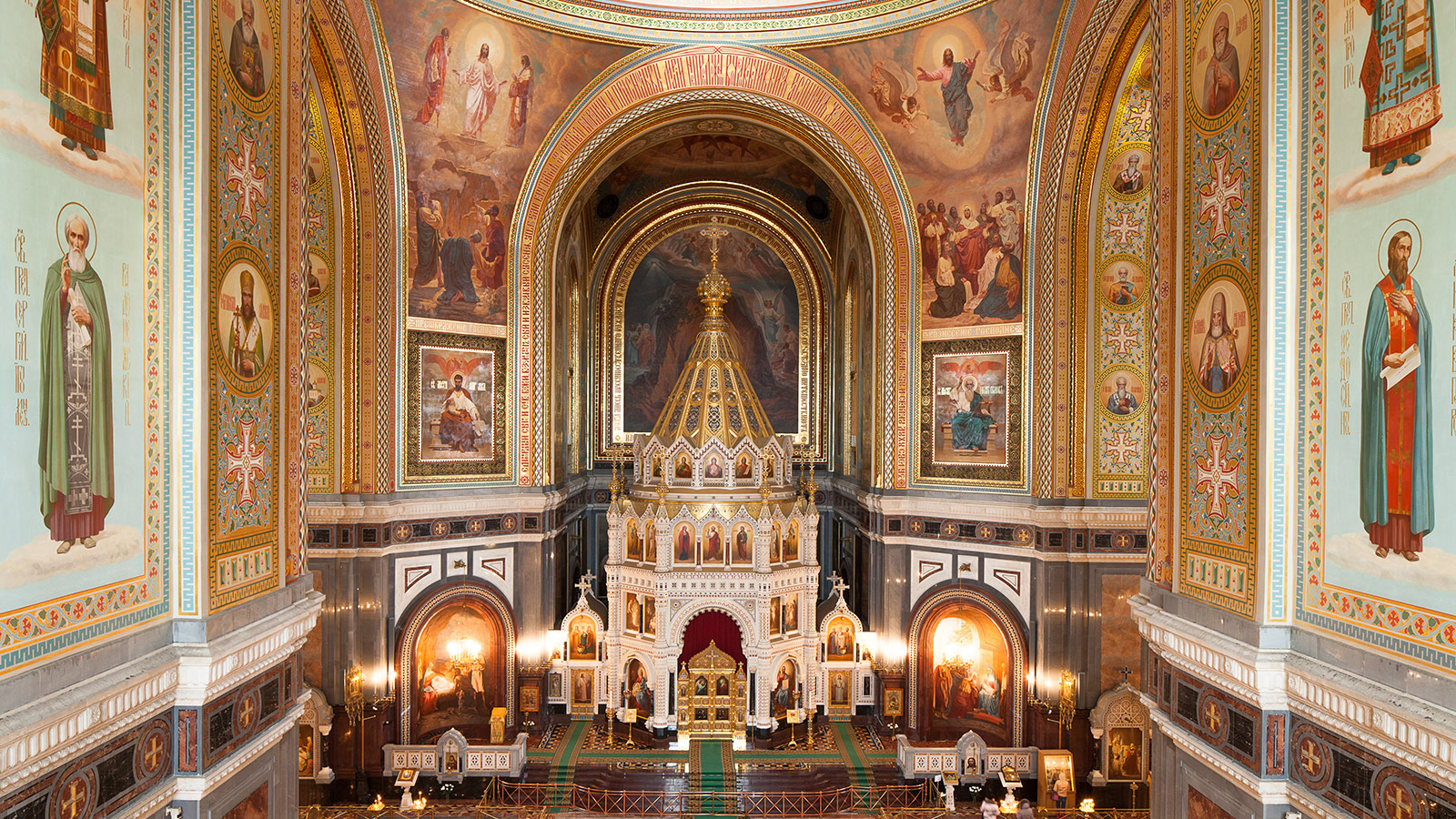
Demolition
Following the 1917 Russian Revolution, the USSR’s official state atheism resulted in the 1921-1928 anti-religious campaign, during which many “church institution[s] at [the] local, diocesan or national level were systematically destroyed.” Following the death of Vladimir Lenin in 1924, Soviet leader Joseph Stalin chose the prominent site of the cathedral as the proposed site for a monument to socialism known as the Palace of the Soviets. It was to have modernistic, buttressed tiers to support a gigantic statue of Lenin perched on top of a dome with his arm raised in the air.
The government plans for economic development in Russia during the 1930s required more funds than were available at the time. In searching for additional sources of revenue and funding, government agencies saw monetary value in religious and historical monuments that had not yet been destroyed or otherwise repurposed for government use. On 24 February 1930, the economic department of the OGPU sent a letter to the Chairman of the Central Executive Committee asking to remove the golden domes of the Christ the Saviour Cathedral. The letter noted that the dome of the church contained over 20 tons of gold of “excellent quality”, and that the cathedral represented an “unnecessary luxury for the Soviet Union, and the withdrawal of the gold would make a great contribution to the industrialization of the country.” The People’s Commissariat of Finance did not object to this proposal.
On 5 December 1931, by order of Stalin’s minister Lazar Kaganovich, the Cathedral of Christ the Saviour was dynamited and reduced to rubble. It took more than a year to clear the debris from the site. The construction of the Palace of Soviets was ultimately halted due to a lack of funds, problems with flooding from the nearby Moskva River, and the outbreak of World War II. Some of the marble from the walls and marble benches from the cathedral were used in nearby Moscow Metro stations. The original marble high reliefs were preserved and are now on display at the Donskoy Monastery (see the photo). For many decades, these reliefs were the only reminders of one of the largest Orthodox churches ever built. The flooded foundation hole remained on the site, but in 1958 under Nikita Khrushchev, it was transformed into the world’s largest open air swimming pool, named Moskva Pool.
拆除
在1917年俄國革命之後,蘇聯的官方無神論運動導致了1921-1928年的反宗教運動,在此期間,許多“地方,教區或國家級的教會機構被系統地摧毀”。列寧(Vladimir Lenin)於1924年去世後,蘇聯領導人約瑟夫·斯大林(Joseph Stalin)選擇大教堂的顯眼位置作為擬建的被稱為蘇維埃宮殿的社會主義紀念碑的位置。它要有現代化的支撐層,以支撐巨大的列寧雕像,他的手臂懸空舉在圓頂上。
俄羅斯政府在1930年代的經濟發展計劃所需的資金超過了當時的可用資金。在尋找其他收入和資金來源時,政府機構發現宗教和歷史古蹟中的貨幣價值尚未被摧毀或重新用於政府用途。 1930年2月24日,OGPU的經濟部門致函中央執行委員會主席,要求拆除基督救世主大教堂的金色圓頂。信中指出,教堂的穹頂包含20噸“質量卓越”的黃金,大教堂代表了“蘇聯不必要的奢侈,撤出黃金將為俄羅斯的工業化做出巨大貢獻”這個國家。”財政人民委員不反對這項提議。
1931年12月5日,在斯大林部長拉扎爾·卡加諾維奇(Lazar Kaganovich)的命令下,救世主基督大教堂被炸毀,變成廢墟。花了一年多的時間清除現場的碎屑。由於缺乏資金,附近莫斯科河的洪水問題以及第二次世界大戰的爆發,蘇維埃宮的建設最終被暫停。附近的莫斯科地鐵站使用了牆壁上的一些大理石和大教堂的大理石長椅。原始的大理石高浮雕被保存下來,現在在Donskoy修道院展出(見照片)。數十年來,這些浮雕僅是使人們想起有史以來最大的東正教教堂之一。淹沒的地基洞仍留在現場,但在1958年由尼基塔·赫魯曉夫(Nikita Khrushchev)領導下,它被改造成世界上最大的露天游泳池,名為Moskva游泳池。
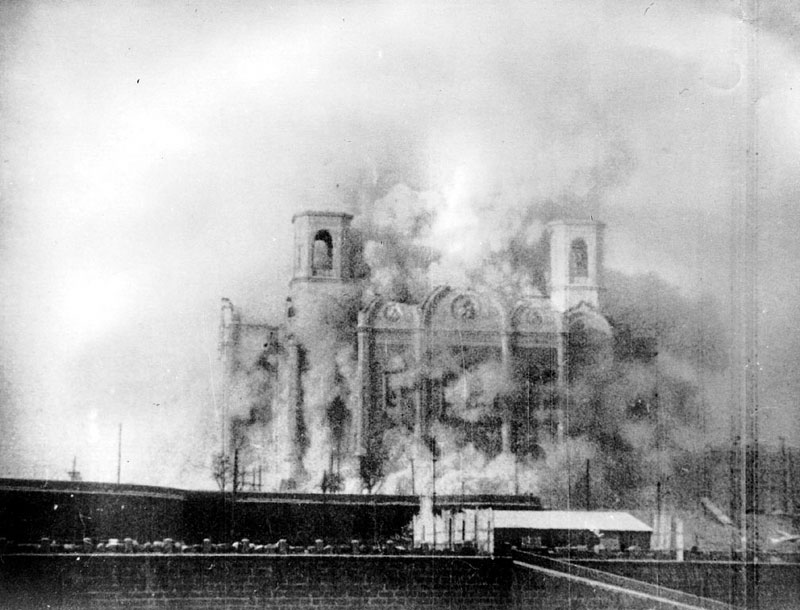
Rebuilt cathedral
In February 1990, the Russian Orthodox Church received permission from the Soviet government to rebuild the Cathedral of Christ the Saviour. A temporary cornerstone was laid by the end of the year. The architect Aleksey Denisov was called upon to design a replica, but was soon fired from the project because of disagreements with the Mayor’s office.When construction was well under way, he was replaced by Zurab Tsereteli, who introduced several controversial innovations. For instance, the original marble high reliefs along the walls were replaced by modern bronze ones, which have few, if any, parallels in Russian church architecture.
A construction fund was initiated in 1992 and funds began to pour in from citizens in the autumn of 1994, and about one million Muscovites donated money for the project. In this year the Moskva Pool was demolished and the cathedral reconstruction commenced. The lower church was consecrated to the Saviour’s Transfiguration in 1997, and the completed Cathedral of Christ the Saviour was consecrated on the Transfiguration Day, 19 August 2000.
Below the new church is a large hall for church assemblies. The cathedral square is graced by several chapels, designed in the same style as the cathedral. A footbridge across the river from Bersenevskaya embankment was constructed between 21 June 2003 and 3 September 2004 (photo). On the slope of the hill to the right of the cathedral are the monumental statues of Alexander II and Nicholas II.
重建大教堂
1990年2月,俄羅斯東正教教堂獲得蘇聯政府的許可,以重建救世主基督大教堂。到年底已奠定了臨時基石。建築師Aleksey Denisov被要求設計一個複製品,但由於與市長辦公室的分歧而很快被解僱。當施工進展順利時,他被Zurab Tsereteli所取代,並提出了一些有爭議的創新。例如,沿牆壁的原始大理石高浮雕被現代的青銅取代,這些青銅在俄羅斯教堂建築中幾乎沒有相似之處。
1992年啟動了一項建築基金,1994年秋天開始從公民那裡註入資金,約100萬莫斯科人為該項目捐款。在這一年,Moskva游泳池被拆除,大教堂重建工作開始了。下級教堂於1997年被奉為救主的變形,而完整的救世主基督大教堂則於2000年8月19日被奉為基督。
新教堂下面是一個大型的教堂集會大廳。大教堂廣場上裝飾著數個與大教堂風格相同的小教堂。在2003年6月21日至2004年9月3日期間,修建了一條從Bersenevskaya堤岸跨河的人行天橋(照片)。大教堂右側山坡上有亞歷山大二世和尼古拉斯二世的紀念雕像。
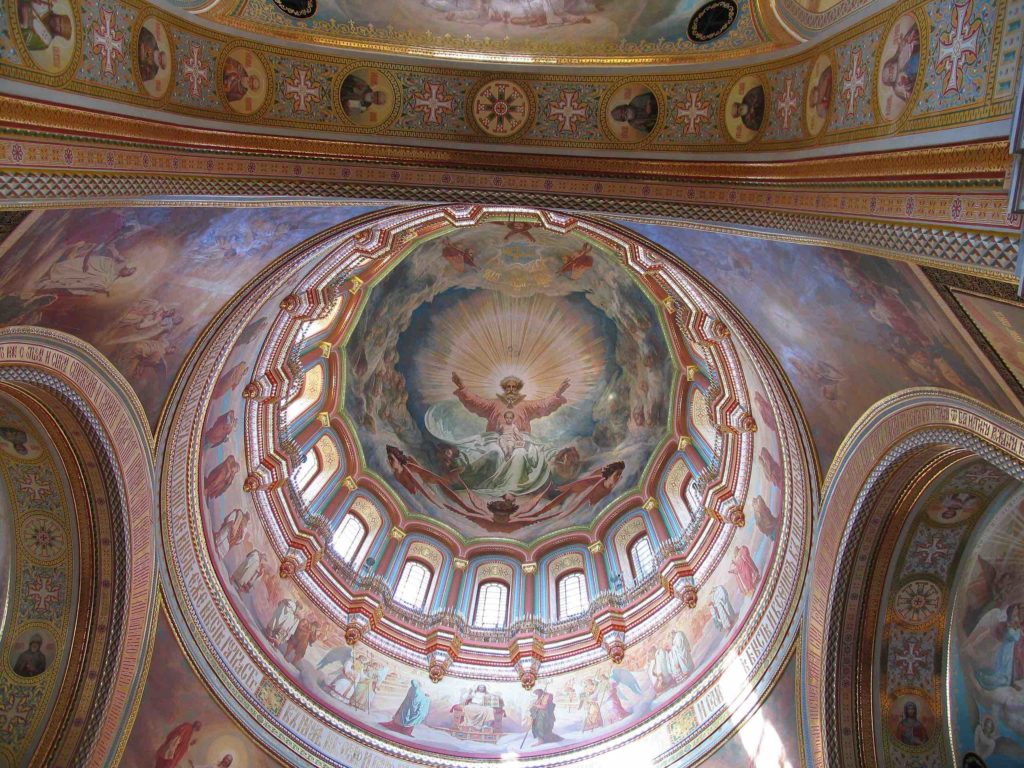

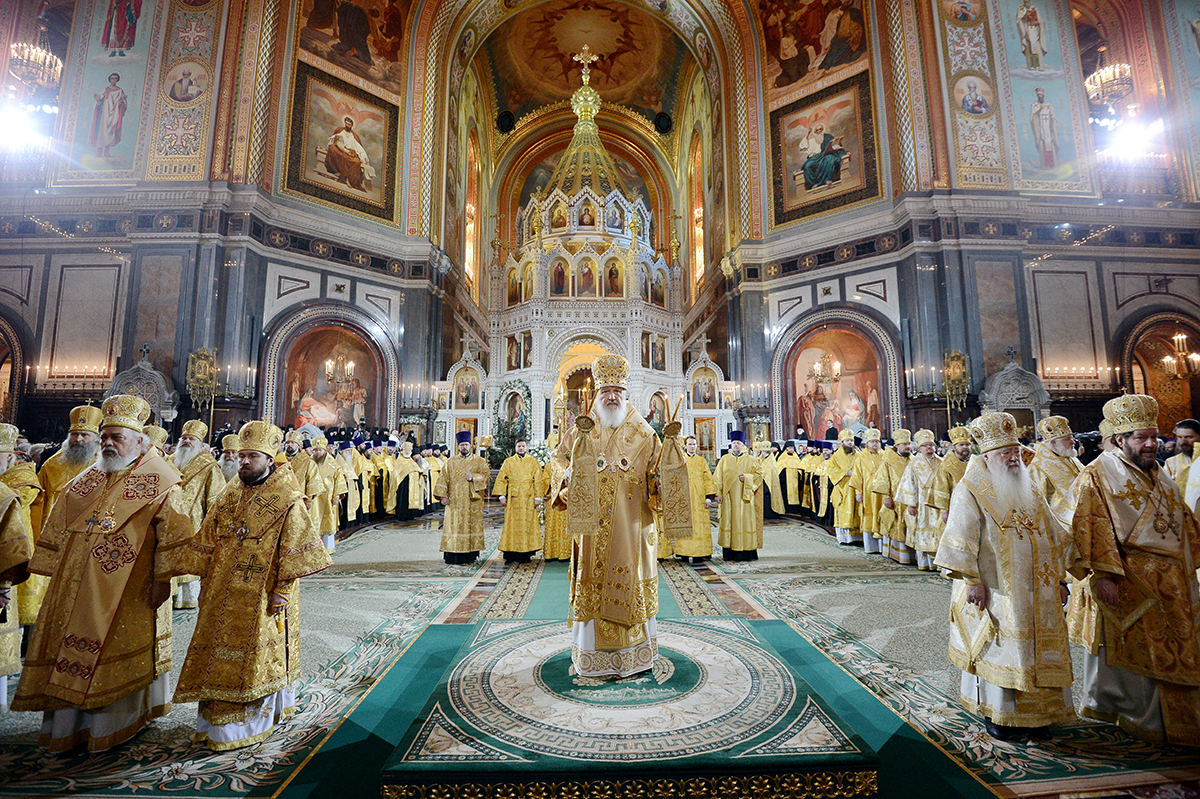
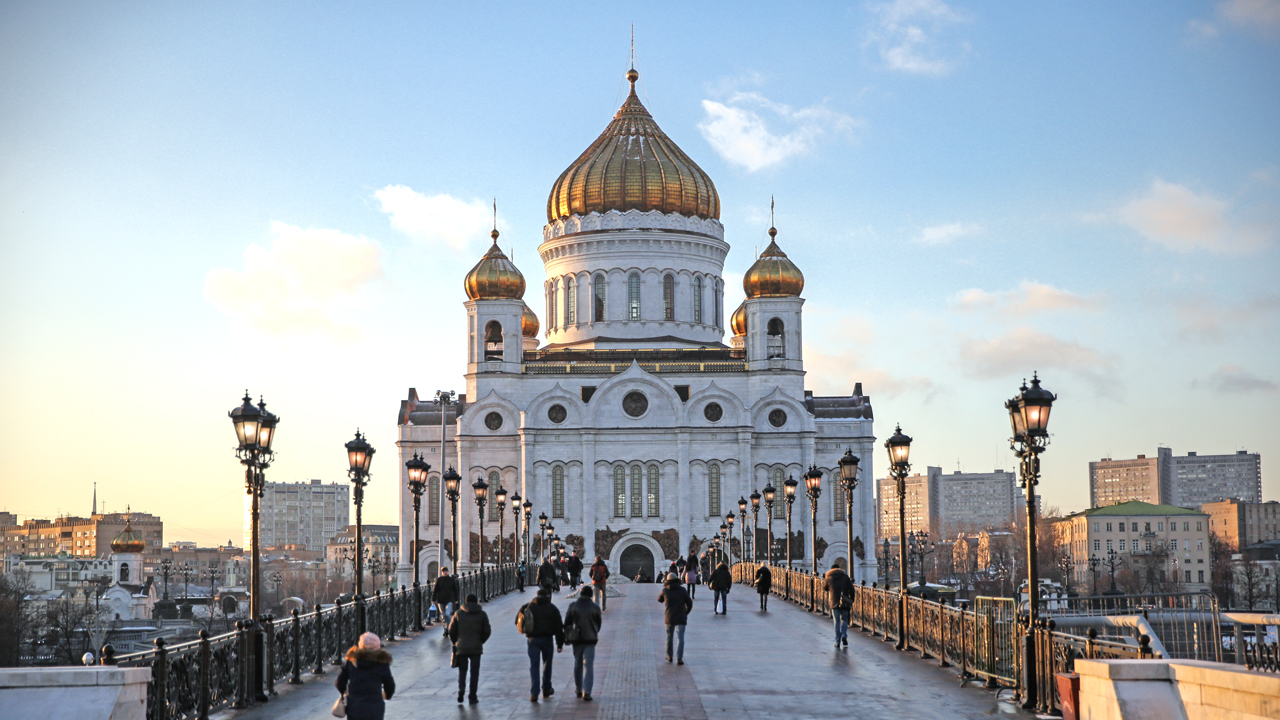
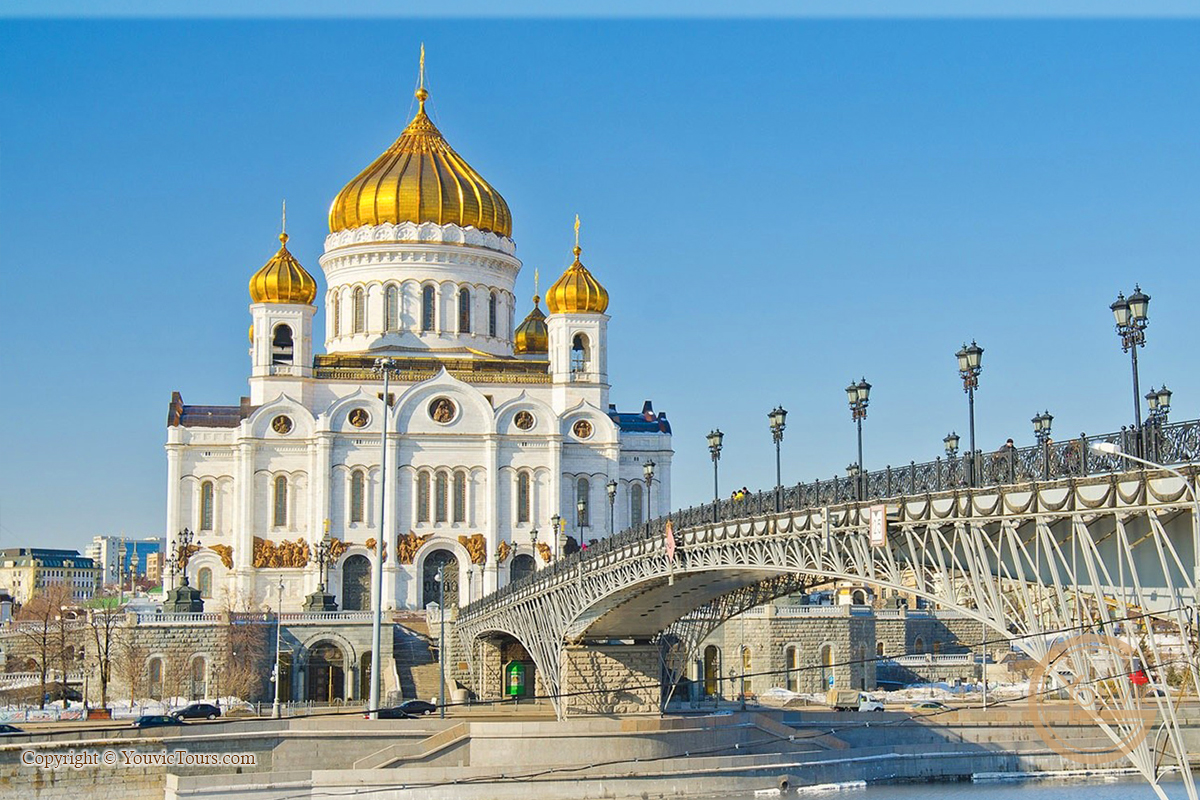
FROM:https://en.wikipedia.org/wiki/Cathedral_of_Christ_the_Saviour
Don’t you think it’s addictive?
Want to know more about the beauty of architecture?
Come and join our members to explore the beauty of architectural design.
覺得看得不過癮嗎?
想要知道更多建築之美嗎?
快來加入我們的會員,一同探索建築設計之美。
The above article is purely for appreciation and sharing purposes, as well as the construction of new technology and the public can be in-depth understanding of the information at the same time there are sources, will be able to query, no use of the document as a commercial transaction, if illegal, please inform the We will immediately remove the site, thank you for cooperation.
以上文章純粹作為欣賞及分享用途,以及將建築新型技術傳遞給與大眾能夠深入了解,同時資料還有來源,將可查詢,絕無使用該文件資料作為商業交易行為,如有違法請務必告知該網站我們將立即處理撤除,謝謝合作。

